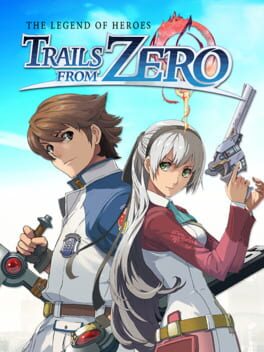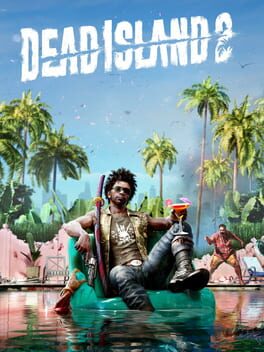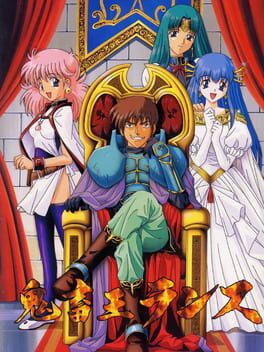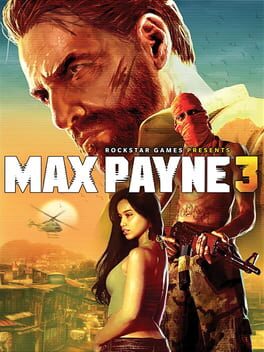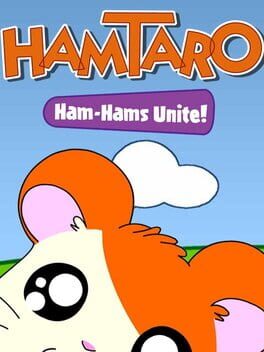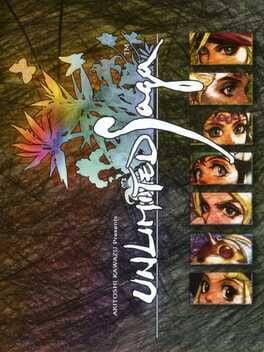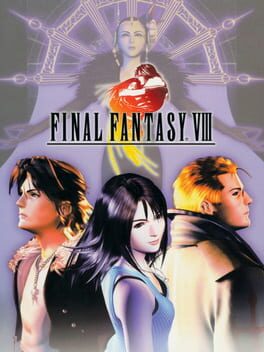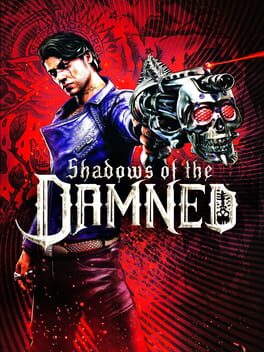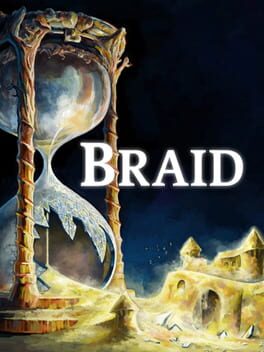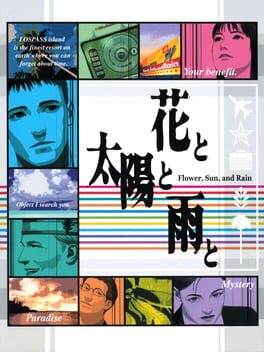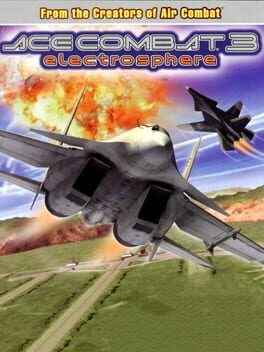kaijuu
43 Reviews liked by kaijuu
me coloque numa sala com 20 pessoas que dão “dicas de escrita” e só eu sairei vivo, causando explosões e derretimentos só com a força negativa que mentalizarei cada vez que alguém falar que “mostre, não conte!” é uma regra indiscutível. com meu martelo de Depende em mãos eu destruirei todos os guias sem asteriscos.
trails from zero não deixa de contar para mostrar, mas acredito que pela limitação estética que os spritezinhos charmosos tem, ele acaba se sentindo na obrigação de mostrar que está sendo contado. as aspirações literárias da série não são segredo pra ninguém — levante uma pedra e quatro fãs de trails vão te falar que o SC tem não sei quantas mil palavras a mais que senhor dos anéis, descasque uma cebola e nove vão enxugar os olhos antes de te dizer alguma frase com a palavra “worldbuilding”, e chacoalhe uma árvore se encontrar alguma — mas por estarmos em uma tela (e não em uma folha), a sentença “’Você está preso!’ Lloyd disse, exalando coragem” não cabe numa caixa de diálogo, que, portanto, é substituída por “Você está preso!”, seguida pela observação “como o Lloyd parece corajoso enquanto diz isso!” de outro personagem. pelo menos um quarto dos diálogos do jogo envolve um outro personagem apontando que o personagem que acabou de dizer X está no estado Y, ou te explicando como aquilo se relaciona com outro evento que rolou dez horas atrás. não dá pra só se referir pelo nome (afinal, não dá pra voltar as páginas!), então toda informação nova precisa ser cheia de apêndices diegéticos pra não deixar ninguém pra trás. de certa forma, dá pra ver isso como consideração (e eu não pretendo nunca prezar pelo que "respeita minha inteligência", também), mas é também uma reação de vítima.
não é a pior coisa do mundo, mas a mitologia de que a Falcom sempre pensa nos jogos dessa série como um só e acaba dividindo em dois no meio da produção (Sky FC e SC, Zero e Azure, CS1 e 2, CS3 e 4) porque ficou maior do que o que foi projetado deve ser em partes por causa disso. eu não me importo muito com esse problema isolado (e acho que isso é uma das coisas que os fãs mais gostam), mas sinto que os desenvolvedores queriam se ver livres dessas amarras – até porque nos cold steel essa parte do texto já melhora consideravelmente (sendo que eu pessoalmente acho que os modelos 3D de CS1 e 2 são bem menos expressivos que os bonequinhos desses jogos que vieram antes) e a história toda continua funcionando de um jeito ótimo.
fico pensando se as coisas que desgostei não foram exacerbadas porque a base do lançamento oficial foi a tradução prévia feita por fãs e não por pessoas que tem alguma intimidade profissional com escrita artística, e por isso os personagens todos tem uma voz tão parecida e as descrições são daquele jeito.
o bom é que apesar disso esse jogo tem ótimas dungeons e eu adoro como o urbanismo pop de crossbell (todo mundo com carinha de soyjak deslumbrado com internet e energia elétrica, se sentindo foda porque não é república e nem império, etc) influencia e é influenciado igualmente nos aspectos sobrenaturais. a falcom é ótima em alimentar tanto a galera “intrigas políticas!” quanto a galera “aura de dragon ball na hora de lutar e robô gigante” que estão em constante contenda porque não percebem que a graça da série é justamente ter os dois. também achei super legal como o conceito de gnose aqui é mais próximo ao do nosso catolicismo (“certo tipo de conhecimento é perigoso e pode acabar com sua individualidade”), diferente de grande parte dos JRPGs em que ela é indubitavelmente boa e necessária moralmente para as pessoas descobrirem por si mesmas a raiz do bem e do mal. ela não é vista como herege e os apócrifos não são escondidos, mas se desenvolve como resultado de certo cientificismo que se demonstra laico mas não é. uma dinâmica bem original e facilmente refutada dependendo do rumo da história, também, então torna todo o caminho bem colorido.
cada vez que eu começo um jogo desses e lembro que ainda faltam outrosseis cinco quatro pra eu chegar onde quero chegar na história me dá certo desânimo, mas aí chega o final e me motivo de novo, vendo as coisas lentamente se formando e ficando mais esotéricas, como todas as grandes obras. o descobrir das partes mais ocultas do mundo se dando tão lentamente acaba refletindo a vida real de um jeito inesperado, e aí vale a pena mesmo ver o sol nascer.
trails from zero não deixa de contar para mostrar, mas acredito que pela limitação estética que os spritezinhos charmosos tem, ele acaba se sentindo na obrigação de mostrar que está sendo contado. as aspirações literárias da série não são segredo pra ninguém — levante uma pedra e quatro fãs de trails vão te falar que o SC tem não sei quantas mil palavras a mais que senhor dos anéis, descasque uma cebola e nove vão enxugar os olhos antes de te dizer alguma frase com a palavra “worldbuilding”, e chacoalhe uma árvore se encontrar alguma — mas por estarmos em uma tela (e não em uma folha), a sentença “’Você está preso!’ Lloyd disse, exalando coragem” não cabe numa caixa de diálogo, que, portanto, é substituída por “Você está preso!”, seguida pela observação “como o Lloyd parece corajoso enquanto diz isso!” de outro personagem. pelo menos um quarto dos diálogos do jogo envolve um outro personagem apontando que o personagem que acabou de dizer X está no estado Y, ou te explicando como aquilo se relaciona com outro evento que rolou dez horas atrás. não dá pra só se referir pelo nome (afinal, não dá pra voltar as páginas!), então toda informação nova precisa ser cheia de apêndices diegéticos pra não deixar ninguém pra trás. de certa forma, dá pra ver isso como consideração (e eu não pretendo nunca prezar pelo que "respeita minha inteligência", também), mas é também uma reação de vítima.
não é a pior coisa do mundo, mas a mitologia de que a Falcom sempre pensa nos jogos dessa série como um só e acaba dividindo em dois no meio da produção (Sky FC e SC, Zero e Azure, CS1 e 2, CS3 e 4) porque ficou maior do que o que foi projetado deve ser em partes por causa disso. eu não me importo muito com esse problema isolado (e acho que isso é uma das coisas que os fãs mais gostam), mas sinto que os desenvolvedores queriam se ver livres dessas amarras – até porque nos cold steel essa parte do texto já melhora consideravelmente (sendo que eu pessoalmente acho que os modelos 3D de CS1 e 2 são bem menos expressivos que os bonequinhos desses jogos que vieram antes) e a história toda continua funcionando de um jeito ótimo.
fico pensando se as coisas que desgostei não foram exacerbadas porque a base do lançamento oficial foi a tradução prévia feita por fãs e não por pessoas que tem alguma intimidade profissional com escrita artística, e por isso os personagens todos tem uma voz tão parecida e as descrições são daquele jeito.
o bom é que apesar disso esse jogo tem ótimas dungeons e eu adoro como o urbanismo pop de crossbell (todo mundo com carinha de soyjak deslumbrado com internet e energia elétrica, se sentindo foda porque não é república e nem império, etc) influencia e é influenciado igualmente nos aspectos sobrenaturais. a falcom é ótima em alimentar tanto a galera “intrigas políticas!” quanto a galera “aura de dragon ball na hora de lutar e robô gigante” que estão em constante contenda porque não percebem que a graça da série é justamente ter os dois. também achei super legal como o conceito de gnose aqui é mais próximo ao do nosso catolicismo (“certo tipo de conhecimento é perigoso e pode acabar com sua individualidade”), diferente de grande parte dos JRPGs em que ela é indubitavelmente boa e necessária moralmente para as pessoas descobrirem por si mesmas a raiz do bem e do mal. ela não é vista como herege e os apócrifos não são escondidos, mas se desenvolve como resultado de certo cientificismo que se demonstra laico mas não é. uma dinâmica bem original e facilmente refutada dependendo do rumo da história, também, então torna todo o caminho bem colorido.
cada vez que eu começo um jogo desses e lembro que ainda faltam outros
Dead Island 2
2023
Enquanto o sangue é esbanjado de forma magnífica por toda a tela, um espetáculo visual é perpetuado sob os nossos olhos: na medida em que milhares são triturados, os seus membros decepados dançam fervorosamente em torno da câmera, a qual os capta de maneira lenta e sensual, criando assim um breve momento orgasmo, que vicia e nos faz clamar por mais e mais por um fetiche tão doentio como tal. Dead Island 2, independente da presença dos elementos tradicionais de todo santo AAA que há pela indústria, é sobre a carne; sobre o quão prazeroso e estimulante a violência pode ser; um jogo que impõe um contraste entre o realismo do corpo humano e uma violência tão vulgar e exagerada, perpetuando um loop em torno do massacre e consequentemente da exaltação do grotesco como expressão. Se por um lado há obras que condenam a violência na mídia, Dead Island 2 é a antítese: um perverso conto erótico acerca das minúcias da carne humana.
Kichikuou Rance
1996
This review contains spoilers
Kichikuou Rance was already the seventh game to release from Alicesoft in a series that started with a goofy adventure game that strongly emanated the energy of some shit a few friends threw together for fun. The characters of Rance and Lia in their early incarnations bear a fair bit of resemblance to Ataru and Lum from Urusei Yatsura in appearance, behavior, and their whole relationship dynamic, there are numerous very overt references to Gundam, the later Rance 3 is pretty similar to the game Emerald Dragon in its plot structure, gameplay, and even some of the new characters introduced to the point of being more or less a parody (though I'd honestly say Rance 3 is the better game here). None of them really had anything substantial to say and their main draw was the morally callous protagonist who murders and rapes and fucks shit up for everyone. And Rance himself did become a popular character for this even in those early years.
The first hint of a real shift in tone for the company's games to my knowledge came with Toushin Toshi II in 1994, a story about a man in a committed relationship with his girlfriend thrown into a series of increasingly dire circumstances often leaving the player forced to choose between doing some reprehensible thing that could betray her trust or to not and make things harder for yourself, culminating in the Sans Undertale judgment scene but done over twenty years prior. Also like Undertale there are no real consequences unless you decide to be as evil as possible, but the game seems very at odds with and uncomfortable with itself in a fascinating way. As with Rance a lot of the sex scenes are rape by the protagonist, but here you can always choose to not do it and the game constantly condemns you if you choose to, despite no extrinsic reward for not doing it. There's no content to replace those scenes, but the game doesn't want you to see them.
Kichikuou Rance ('Kichikuou' is often translated as 'Brutal King', but 'kichiku' most literally means something like cruel and uncaring) then builds on that unease, now placing the character of Rance in a position of great authority over a nation's army and presenting a very open-ended conquest strategy game that displays, in great detail and at times in pretty startling ways, the consequences of his actions on the world and its people. There are around two-hundred characters in the game with their own subplots running parallel to the rest of the game, and most of those subplots have multiple possible conclusions with often unpredictable conditions. Each playthrough concludes with the game informing you of whether you got the 'good' or 'bad' outcome for all these characters, placing specific emphasis on this part of the game. It's frankly shockingly complex for a game from an eroge developer and I don't know if I've ever seen something quite like this emulated anywhere else. The strategy gameplay itself is not very complex at all and it's mostly just inoffensive, but it doesn't really matter. It's sort of more an adventure game told through the structure of a strategy game like Nobunaga's Ambition than it is a strategy game in itself.
The story culminates in the revelation that the world was created by a god who derives pleasure from watching people suffer, serving as a rather direct stand-in for the audience viewing the world through Rance's perspective. If we're to take this to its logical conclusion then it could be read as a statement of resentment on the part of the developers or writers that Rance was a popular character, which would explain quite a lot about the tone shift. The consequence of all this is a game hostile to its own violent porno power fantasy but also unable to entirely get away from it, so you can see the rape porn if you want but then also the game tells you explicitly that you're ruining people's lives and maybe you've worsened some poor girl's crippling drug addiction because you did that or maybe they killed themselves because of you or etc., whereas in the games before and since it happened largely without consequence to the victims.
Was this actually convincing to anyone who was playing these games uncritically? I honestly doubt it, for however much I respect the attempt. But what interests me is that these types of scenarios, decisions, and potential outcomes even exist in this game whatsoever, a degree of potential for horrific behavior and consequence that's virtually nonexistent in the entire medium including other eroge, in a medium that's supposed to be defined by the player's ability to make decisions. And the reason for that is obvious; the presence of this content makes the game an extremely hard sell and it can never be ported anywhere. But if you're able to get over that then there's really nothing else like this.
The first hint of a real shift in tone for the company's games to my knowledge came with Toushin Toshi II in 1994, a story about a man in a committed relationship with his girlfriend thrown into a series of increasingly dire circumstances often leaving the player forced to choose between doing some reprehensible thing that could betray her trust or to not and make things harder for yourself, culminating in the Sans Undertale judgment scene but done over twenty years prior. Also like Undertale there are no real consequences unless you decide to be as evil as possible, but the game seems very at odds with and uncomfortable with itself in a fascinating way. As with Rance a lot of the sex scenes are rape by the protagonist, but here you can always choose to not do it and the game constantly condemns you if you choose to, despite no extrinsic reward for not doing it. There's no content to replace those scenes, but the game doesn't want you to see them.
Kichikuou Rance ('Kichikuou' is often translated as 'Brutal King', but 'kichiku' most literally means something like cruel and uncaring) then builds on that unease, now placing the character of Rance in a position of great authority over a nation's army and presenting a very open-ended conquest strategy game that displays, in great detail and at times in pretty startling ways, the consequences of his actions on the world and its people. There are around two-hundred characters in the game with their own subplots running parallel to the rest of the game, and most of those subplots have multiple possible conclusions with often unpredictable conditions. Each playthrough concludes with the game informing you of whether you got the 'good' or 'bad' outcome for all these characters, placing specific emphasis on this part of the game. It's frankly shockingly complex for a game from an eroge developer and I don't know if I've ever seen something quite like this emulated anywhere else. The strategy gameplay itself is not very complex at all and it's mostly just inoffensive, but it doesn't really matter. It's sort of more an adventure game told through the structure of a strategy game like Nobunaga's Ambition than it is a strategy game in itself.
The story culminates in the revelation that the world was created by a god who derives pleasure from watching people suffer, serving as a rather direct stand-in for the audience viewing the world through Rance's perspective. If we're to take this to its logical conclusion then it could be read as a statement of resentment on the part of the developers or writers that Rance was a popular character, which would explain quite a lot about the tone shift. The consequence of all this is a game hostile to its own violent porno power fantasy but also unable to entirely get away from it, so you can see the rape porn if you want but then also the game tells you explicitly that you're ruining people's lives and maybe you've worsened some poor girl's crippling drug addiction because you did that or maybe they killed themselves because of you or etc., whereas in the games before and since it happened largely without consequence to the victims.
Was this actually convincing to anyone who was playing these games uncritically? I honestly doubt it, for however much I respect the attempt. But what interests me is that these types of scenarios, decisions, and potential outcomes even exist in this game whatsoever, a degree of potential for horrific behavior and consequence that's virtually nonexistent in the entire medium including other eroge, in a medium that's supposed to be defined by the player's ability to make decisions. And the reason for that is obvious; the presence of this content makes the game an extremely hard sell and it can never be ported anywhere. But if you're able to get over that then there's really nothing else like this.
Max Payne 3
2012
The messenger, the oldest and most widespread role in video games.
Communication condensed in a small, fleeting and adorable society like the hamsters themselves
Director Mariko Yumoto hints at delicacy by treating and demanding understanding from NPCs in a manner similar to Love-the-lic games in an approach more focused on small interaction commands than time and space.
Even so, the game is very small and calls for expansion in concept, but the small achievement of being able to encapsulate slang communication with delicacy and rhythm in a game that (probably) was aimed at children is admirable.
Communication condensed in a small, fleeting and adorable society like the hamsters themselves
Director Mariko Yumoto hints at delicacy by treating and demanding understanding from NPCs in a manner similar to Love-the-lic games in an approach more focused on small interaction commands than time and space.
Even so, the game is very small and calls for expansion in concept, but the small achievement of being able to encapsulate slang communication with delicacy and rhythm in a game that (probably) was aimed at children is admirable.
Resident Evil 4
2005
what may just separate the veterans from the inexperienced in this game is the quality of their knifework. leon might pack an arsenal replete with the sexiest weapons of all time, but it's the tried-and-true double-edged stiletto he's packing that remains your eternal companion out there in the shit. utilizing it to its fullest requires confidence to an extent that resembles rashness - a full understanding of where to strike, when to kick, and how to deke. if you ask me, coming fresh off a run of professional, this is one of the most compelling elements of RE4 - the convergence between melee and gunplay is transformative, configuring leon into a living weapon. there is no element of his kit that goes unused or registers as unnecessary.
i once jokingly claimed that a remake of this title needed to simply superimpose re6's base of mechanics on to the game, but actually convey to players how best to parse these systems. there's actually probably a little nugget of gold buried in there - after all, i refuse emphatically the addition of a block button ala the ethan winters duology, or the presence of a parry which, when mishandled, tends to choke combat systems with its rote all-encompassing applicability. what they really need to do here is expand and tailor the level of knifework present. imagine if we got rid of the need for qtes because we got a game with hitboxes every bit as fair, but your knife mode had dozens of options attached to it resembling something like genes dodges from god hand, informally and unofficially linking mikamis action game tenure...errant slashes leading to blades clashing...im talking high risk high reward knife action in such a manner that it doesn't compromise on leons fragility. that, to me, would be a good rendition of re4. shouldn't bend the knee or make concessions to enemy design so as to make the holy grail 'knife only challenge run' more palatable to layfolk...people figured out how to do it with the original, they'll do it again
also id like to be able to throw my knife
i once jokingly claimed that a remake of this title needed to simply superimpose re6's base of mechanics on to the game, but actually convey to players how best to parse these systems. there's actually probably a little nugget of gold buried in there - after all, i refuse emphatically the addition of a block button ala the ethan winters duology, or the presence of a parry which, when mishandled, tends to choke combat systems with its rote all-encompassing applicability. what they really need to do here is expand and tailor the level of knifework present. imagine if we got rid of the need for qtes because we got a game with hitboxes every bit as fair, but your knife mode had dozens of options attached to it resembling something like genes dodges from god hand, informally and unofficially linking mikamis action game tenure...errant slashes leading to blades clashing...im talking high risk high reward knife action in such a manner that it doesn't compromise on leons fragility. that, to me, would be a good rendition of re4. shouldn't bend the knee or make concessions to enemy design so as to make the holy grail 'knife only challenge run' more palatable to layfolk...people figured out how to do it with the original, they'll do it again
also id like to be able to throw my knife
Unlimited SaGa
2002
Final Fantasy VIII
1999
Final Fantasy VIII
1999
What the junction system introduces in customisability, it performs in sacrilege to the idea of characters progressing toward mastery. Having to 'draw' spells makes every individual just the sum of what is available to them on the threshold of an action; a compound or assemblage that comes into being moment-by-moment. Nobody is innately anything, they're all just ordinary. I can understand why this upsets some, not because it is a bad system in itself, but because the game is already so cold and strange. The human proportions given to the character models, and then the way they're rendered in sharp fragments, makes it all feel strangely distanced. The cutscenes as well work less to pull us into the world and impress us (as other Final Fantasy titles do), and more to establish that there is something already going on with these people, something we have to work to catch up on. The most compelling animations set the tone, with emphasis given to either moments of intimacy like holding hands or dancing, or just settling on the yearning across the cast's faces. There is something inscrutable about the closeups, but then looking itself is the action in the style of Sirkian melodrama. The emotion isn't given to us directly, instead we're left with a solemn affect that's basically classical; read across bodies and faces; gestural, but always restrained. It is well known that Erik Satie's three Gymnopédies appear across countless JRPGs throughout the 1990s, and here Nobuo Uematsu resists quotation to instead mine the composition's distinctive warm melancholy. Like a sunshower on a Sunday afternoon. The pre-rendered backgrounds blend familiar architecture with the speculative, which keeps it grounded in an ambiguous temporal and geographic register. Final Fantasy VIII is a high school soap opera and messed up science fiction thing with wormholes, amnesia, and a very literal interpretation of Marx's "annihilation of time by space", all in this gloriously austere package. Less broken than kind of aloof, and to me at least a genre masterpiece.
came dressed in black ready to mourn immense creative stifling by the casual, profit-driven tyranny of western publishers, stayed for akira yamaoka's godlike score and for the comic and raunchy but often unrealized attempts to jab at the medium's hypermasculine paragons
if you haven't read kurayami dance and have any interest in suda or in this game's behind-the-scenes progression from kafkaesque horror to b-movie grindhouse romp, id highly suggest you do because it's insane how much of the language and iconography of that manga (itself a conceptual iteration on kurayami, a separate project that never saw realization, and the initial vision suda had for SOTD prior to ea's chokehold on creative direction) is reflected here; the manga presents a lovely middle ground between the two diametrically opposed visions at the core of SOTD's inception. shared in common are the ideas of an easy ride-influenced road trip, a talkative otherworldly companion, a journey through supernatural planes of existence, a mysterious castle separate from the general populace, and a few other smaller commonalities. still, SOTD opts for a much less thematically complete endeavour (with its sardonic and satirical throughlines of male insecurity as it relates to female sexuality feeling largely uninterrogated), and considering the pedigree behind the project it's shocking the gameplay really isn't up to snuff at all either, so it's harder to enjoy as just a thrilling and cheesy adventure. mikami somehow turned in a dull third person shooter with finicky controls and mechanics that trivialize the vast majority of the combat scenarios
it's difficult to fault any of this - reading kurayami dance, one gets the sense that suda wanted to make something more in line with flower, sun, and rain again and simply couldn't because EA didnt see those ideas as trendy or appealing to western markets - but it's a shame the end result is a poor experience that appealed to no one if sales data is anything to go by, that hasn't aged especially gracefully, and that games criticism of its era struggled to sum up, reconcile with, or effectively assess. the most common criticism was so of its time it almost hurts - the lack of a new game+ feature. no discussion of narrative, stilted mechanics, corporate meddling, what have you. just a run of the mill release to throw into the 7/10 pile and forget.
of the titles suda had a hand in in the early 2010s, produced in his absence from the director's seat, this is probably my second favourite, but it's really not saying much. there's interesting insight from the development of killer is dead that showcases yet more publisher strangulation - the implementation of gigolo mode, mandated by kadokawa. what's interesting here is that, commenting on gigolo modes inclusion, suda explicitly acknowledged that these features would probably harm grasshoppers reputation, especially when taken in conjunction with both this game and no more heroes 2, but there wasn't much he could do about it. that lack of control speaks volumes about the experiences on offer, and SOTD is the poster boy for that fraught process. playing through the game, i can say that as interesting as it could be at times? thank god that eras over and that grasshopper is moving on to self-publishing. at this rate, you'd be better off reading kurayami dance and playing travis strikes again than trying your hand at SOTD, both of which are more interesting to experience, are far more emotionally affecting, and reflect on this title in interesting ways. dissociative identity might be a trademark of sudas works, but it's always bleak when the game itself is undergoing an overt identity crisis
if you haven't read kurayami dance and have any interest in suda or in this game's behind-the-scenes progression from kafkaesque horror to b-movie grindhouse romp, id highly suggest you do because it's insane how much of the language and iconography of that manga (itself a conceptual iteration on kurayami, a separate project that never saw realization, and the initial vision suda had for SOTD prior to ea's chokehold on creative direction) is reflected here; the manga presents a lovely middle ground between the two diametrically opposed visions at the core of SOTD's inception. shared in common are the ideas of an easy ride-influenced road trip, a talkative otherworldly companion, a journey through supernatural planes of existence, a mysterious castle separate from the general populace, and a few other smaller commonalities. still, SOTD opts for a much less thematically complete endeavour (with its sardonic and satirical throughlines of male insecurity as it relates to female sexuality feeling largely uninterrogated), and considering the pedigree behind the project it's shocking the gameplay really isn't up to snuff at all either, so it's harder to enjoy as just a thrilling and cheesy adventure. mikami somehow turned in a dull third person shooter with finicky controls and mechanics that trivialize the vast majority of the combat scenarios
it's difficult to fault any of this - reading kurayami dance, one gets the sense that suda wanted to make something more in line with flower, sun, and rain again and simply couldn't because EA didnt see those ideas as trendy or appealing to western markets - but it's a shame the end result is a poor experience that appealed to no one if sales data is anything to go by, that hasn't aged especially gracefully, and that games criticism of its era struggled to sum up, reconcile with, or effectively assess. the most common criticism was so of its time it almost hurts - the lack of a new game+ feature. no discussion of narrative, stilted mechanics, corporate meddling, what have you. just a run of the mill release to throw into the 7/10 pile and forget.
of the titles suda had a hand in in the early 2010s, produced in his absence from the director's seat, this is probably my second favourite, but it's really not saying much. there's interesting insight from the development of killer is dead that showcases yet more publisher strangulation - the implementation of gigolo mode, mandated by kadokawa. what's interesting here is that, commenting on gigolo modes inclusion, suda explicitly acknowledged that these features would probably harm grasshoppers reputation, especially when taken in conjunction with both this game and no more heroes 2, but there wasn't much he could do about it. that lack of control speaks volumes about the experiences on offer, and SOTD is the poster boy for that fraught process. playing through the game, i can say that as interesting as it could be at times? thank god that eras over and that grasshopper is moving on to self-publishing. at this rate, you'd be better off reading kurayami dance and playing travis strikes again than trying your hand at SOTD, both of which are more interesting to experience, are far more emotionally affecting, and reflect on this title in interesting ways. dissociative identity might be a trademark of sudas works, but it's always bleak when the game itself is undergoing an overt identity crisis
Braid
2008
"...you can make a wonderful film about nothing. Look at Fellini. The most important thing in a movie is the actor, and everything which is in front of the camera. And the decadence of the cinema, and we have a certain decadence, comes from the glorification of the director as...being not the servant of the actors, but his master...the job of the director is to discover in the actor something more than he knew he had. The job of the director is to choose what he sees. And to an extent, to create. But a great deal of what is applauded as creation is simply there. It was there, when you put the camera...that actor, that bit of scenery, that veil that hung over the river - it was there! And you're intelligent enough to shoot it...the director should be very intelligent, preferably not intellectual. Because the intellectual is the enemy of all the performing arts." - Orson Welles, 1982
completely unjustifiable and anarchic. what we have in FSR is a surrealist pseudosequel to a 1999 visual novel that was not localized at the time that FSR was, making the game upon original release borderline incomprehensible. compelling analysis can still be written without knowledge of the silver case, but the vast majority have settled into a comfortable deconstructionist lens - austin walkers interpretation is one such prominent take, evincing the game's dissatisfactory DS implementations (useless bonus puzzles, step counter) as part and parcel of the game's antagonistic design, antithetical to its own industry ('It's mean. It's cruel. I kind of love it.')
despite this, one of the most beautiful games ever and the work of someone i am increasingly convinced by the day is one of the most valuable devs in the industry. masterful in tone and delivery, FSR sharply threads together various disparate narrative and thematic strands to excellent effect, resulting in an anti-game package that stands head and shoulders above the crowd by closely resembling something akin to video game poetry. what does FSR pontificate on, if not to act the provocateur or to senselessly challenge convention? in no short order: truth, mystery, identity, purity, artifice, colonialism, primitivism, paradise, death, rebirth, spirituality. the influence of kafka, jodorowsky, and lynch, for example, is felt strongly, but never so strong that it is cynical or unoriginal - to be ensnared in suda's mosaic of cultural references is only to gain appreciation for the ingenuity of his work.
i think FSR and NMH's reputations precede them such that suda is seen as a figure whose sole developmental shtick lies in deconstruction and satire, but FSR is so much more than that - it only requires the player to ascend to match its level, to bask in the sunlight and take solace in ocean waves, to intuit what can't be sensed through mere deduction and speculation. truth is, after all, as natural, forthcoming, and innate as the bright blue skies around us, sometimes.
despite this, one of the most beautiful games ever and the work of someone i am increasingly convinced by the day is one of the most valuable devs in the industry. masterful in tone and delivery, FSR sharply threads together various disparate narrative and thematic strands to excellent effect, resulting in an anti-game package that stands head and shoulders above the crowd by closely resembling something akin to video game poetry. what does FSR pontificate on, if not to act the provocateur or to senselessly challenge convention? in no short order: truth, mystery, identity, purity, artifice, colonialism, primitivism, paradise, death, rebirth, spirituality. the influence of kafka, jodorowsky, and lynch, for example, is felt strongly, but never so strong that it is cynical or unoriginal - to be ensnared in suda's mosaic of cultural references is only to gain appreciation for the ingenuity of his work.
i think FSR and NMH's reputations precede them such that suda is seen as a figure whose sole developmental shtick lies in deconstruction and satire, but FSR is so much more than that - it only requires the player to ascend to match its level, to bask in the sunlight and take solace in ocean waves, to intuit what can't be sensed through mere deduction and speculation. truth is, after all, as natural, forthcoming, and innate as the bright blue skies around us, sometimes.
"Becoming a pilot like I have feels enough like a dream to me. But, recently... I've been thinking—that if the body is nothing more than a container for the mind, then it doesn't actually mean anything to me. I only use my mind when I fly. My body didn't come with wings, but my mind does... and it gave me the sky."
A head-up display, or heads-up display, also known as a HUD, is any transparent display that presents data without requiring users to look away from their usual viewpoints. The origin of the name stems from a pilot being able to view information with the head positioned "up" and looking forward, instead of angled down looking at lower instruments. A HUD also has the advantage that the pilot's eyes do not need to refocus to view the outside after looking at the optically nearer instruments.
Although they were initially developed for military aviation, HUDs are now used in commercial aircraft, automobiles, and other (mostly professional) applications. In video gaming, the HUD is the method by which information is visually relayed to the player as part of a game's user interface. The HUD is frequently used to simultaneously display several pieces of information including the player's health, items, and an indication of progression (such as score, level or kills). Prolonged display of HUD elements may cause permanent damage in the form of burning into the inner coating of the television set, which is impossible to repair. Players who play their games for long hours without turning off the television risk deep harm.
A head-up display, or heads-up display, also known as a HUD, is any transparent display that presents data without requiring users to look away from their usual viewpoints. The origin of the name stems from a pilot being able to view information with the head positioned "up" and looking forward, instead of angled down looking at lower instruments. A HUD also has the advantage that the pilot's eyes do not need to refocus to view the outside after looking at the optically nearer instruments.
Although they were initially developed for military aviation, HUDs are now used in commercial aircraft, automobiles, and other (mostly professional) applications. In video gaming, the HUD is the method by which information is visually relayed to the player as part of a game's user interface. The HUD is frequently used to simultaneously display several pieces of information including the player's health, items, and an indication of progression (such as score, level or kills). Prolonged display of HUD elements may cause permanent damage in the form of burning into the inner coating of the television set, which is impossible to repair. Players who play their games for long hours without turning off the television risk deep harm.
